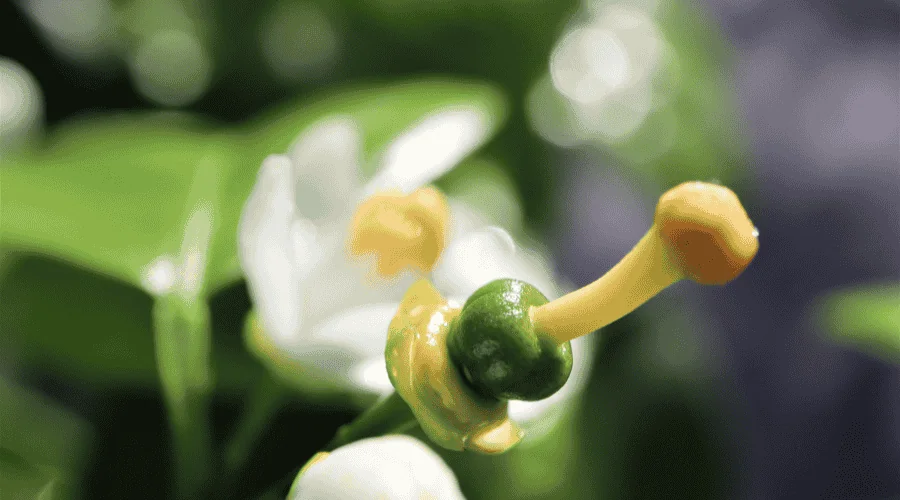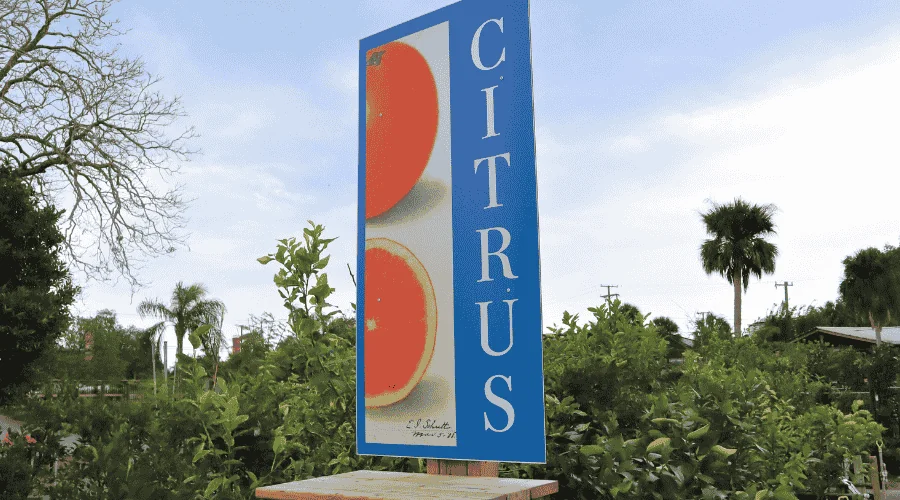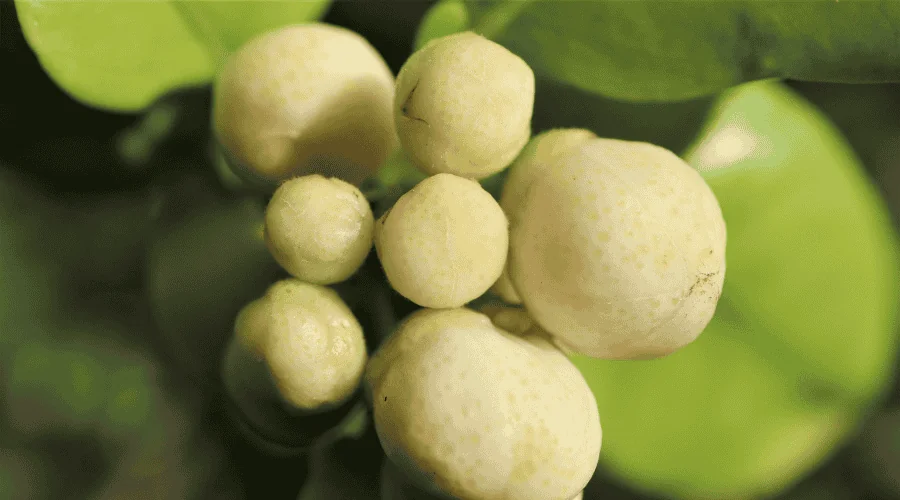By Amanda Rose Newton

If you’ve browsed a Central Florida nursery looking for citrus trees, you’ve likely seen the term “grafted” thrown around — and maybe even spotted tags that say “own-root.” But what do those terms mean, and which is better for your home garden?
Let’s break it down so you can make the best choice for your citrus grove, whether it’s one tree or twenty.
What Does “Grafted” Mean?
Grafting is a horticultural technique in which two different plants are joined together to function. In the case of citrus, this means:
- Rootstock: The bottom part of the plant, chosen for its strong roots and resistance to diseases, pests, or challenging soils.
- Scion: The top part is selected for the type of citrus fruit you want (e.g., navel orange, Meyer lemon, or tangerine).
These two parts are carefully fused together so the tree grows as a single organism — and produces the fruit you’re after.

What Are Own-Root Citrus Trees?
Own-root citrus trees are grown from cuttings or seeds of a single plant, so the entire tree is genetically identical from root to branch. There’s no rootstock-scion fusion — just one plant, top to bottom.
While this method has advantages, it also comes with some significant challenges, especially in Florida.
Why Grafted Trees Are the Standard in Florida
Central Florida gardeners face some unique pressures — from hurricanes to hurricanes of pests. That’s why most citrus trees sold here are grafted.
Here’s why grafted trees make sense in our climate:
- Disease Resistance – Certain rootstocks are chosen for their ability to resist common citrus diseases, such as:
- Phytophthora (root rot)
- Citrus tristeza virus
- Citrus nematodes
- And especially Huanglongbing (HLB or citrus greening)
While no citrus is fully immune to HLB, some rootstocks slow its progress and boost tree tolerance.
- Faster Fruit Production – Grafted citrus trees typically bear fruit 1–3 years earlier than own-root trees.
- Better Adaptation to Soil – Florida’s sandy, sometimes alkaline soils aren’t always citrus-friendly. Rootstocks can be selected to tolerate poor drainage, high pH, or salinity, giving your tree a better chance of thriving.
- Longer Lifespan (When Well-Matched) – When the right rootstock is paired with a compatible scion, the result is a longer-lived tree with better fruit yield over time.
- True-to-Type Flavor and Fruit Quality – One significant benefit of grafted citrus (and other fruit trees) is that they produce reliable, consistent fruit. When you plant a seed from your favorite orange or mango, the resulting tree might not resemble the parent — it could have a different flavor, seed count, or even no fruit at all.
Grafted trees, however, are clones of a known variety. That means:
- You get the same great flavor and fruit quality as the original.
- The tree matures faster and starts fruiting sooner.
- You avoid disappointing surprises like bland or unproductive trees.
- This consistency is why grafting is the standard for fruit trees like mango (‘Carrie,’ ‘Glenn,’ ‘Nam Doc Mai’), avocado, and of course, citrus.
Common Citrus Rootstocks Used in Florida
You might notice the rootstock listed if you’ve ever looked at the label on a grafted citrus tree. Here are a few of the most common ones used in Florida, each with specific strengths:
- Sour Orange: Once widely used, it is now mostly phased out due to its susceptibility to citrus tristeza virus. However, it is still valued for its good flavor and compatibility.
- Carrizo and Swingle Citrumelo: These hybrids are popular for their tolerance to citrus greening, good disease resistance, and adaptation to sandy soils.
- Cleopatra Mandarin: Often used for mandarins and oranges. Tolerant of salinity but slower to establish.
- Volkamer Lemon: Known for vigorous growth and quick fruiting, though more susceptible to cold and some diseases.
- US-942: A newer hybrid with excellent tolerance to HLB and strong performance in Florida trials.
When buying citrus trees, it’s worth asking your nursery or garden center which rootstock is used — it could make a difference in how well the tree does in your specific yard conditions.

Not Just Citrus: Other Grafted Plants to Know
Citrus isn’t the only type of plant commonly grafted in Florida! Here are a few others you’ll run into:
- Roses: Hybrid tea roses and other fancy varieties are often grafted onto hardy rootstocks to improve disease resistance and adaptability.
- Stone Fruits: Peaches, plums, nectarines, and cherries are usually grafted, especially to adjust for chill hour requirements or soil compatibility.
- Grapes: Grapevines are almost always grafted, especially to protect against root pests like phylloxera.
- Tomatoes (Yes, really!): In commercial and even home gardening, grafted tomatoes are gaining popularity for their increased vigor, disease resistance, and heat tolerance — great for Florida’s long, hot growing seasons.
- Ornamental Trees: Many flowering trees (like crape myrtle, dogwood, and redbud) are grafted to encourage specific growth habits or boost resilience.

Choose grafted citrus if you want:
- Faster fruit
- More disease resistance
- Better adaptation to Florida soils
- Consistent, true-to-type fruit quality
- Long-term yield and resilience
Consider own-root citrus only if:
- You’re experimenting
- Growing in pots with controlled conditions
- Willing to accept greater risk and a slower timeline
Whether you’re growing oranges, lemons, or a unique hybrid, understanding the difference between grafted and own-root citrus helps you make better planting decisions. In Central Florida, where citrus faces severe environmental and disease pressures, grafted trees are your best bet for success — and the best way to ensure you get the exact fruit you’re dreaming of.


